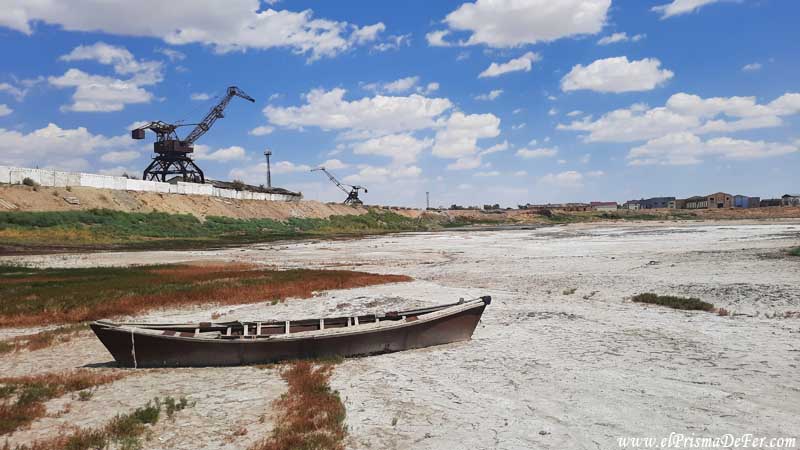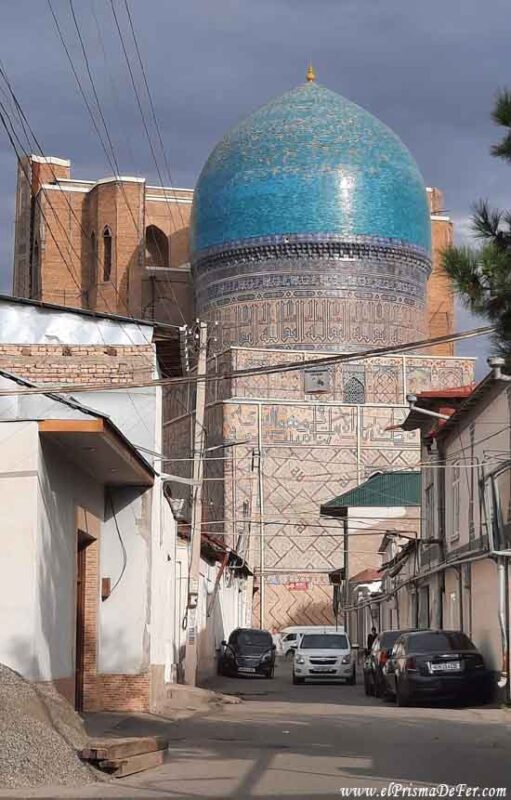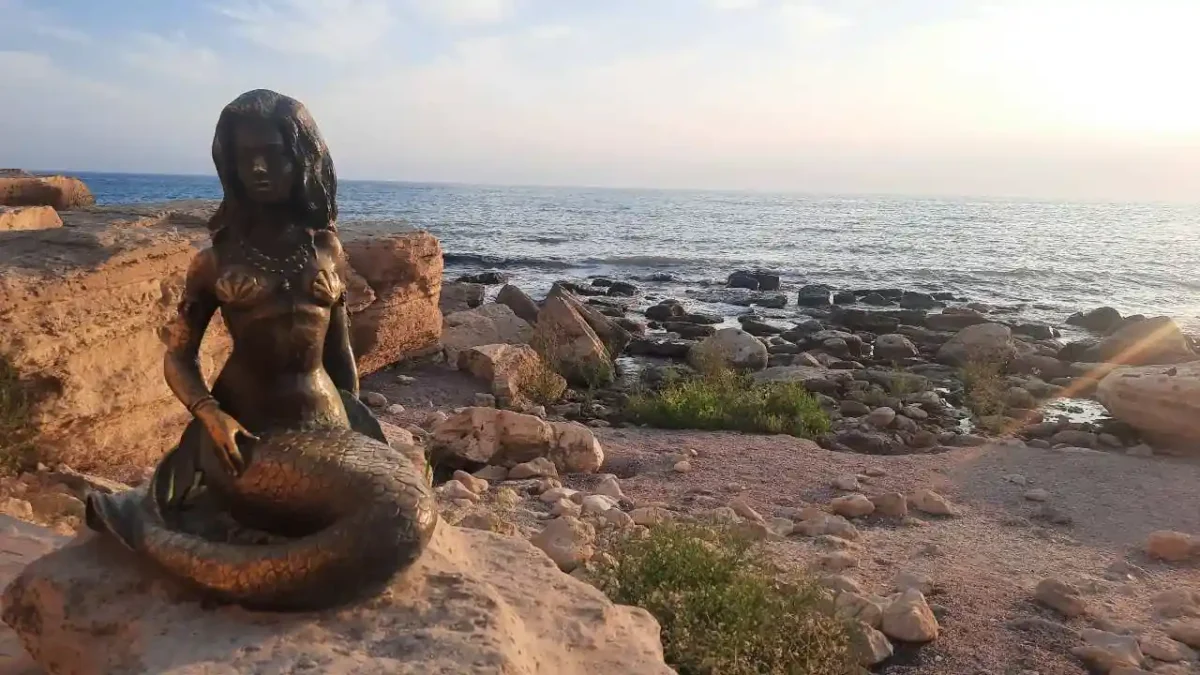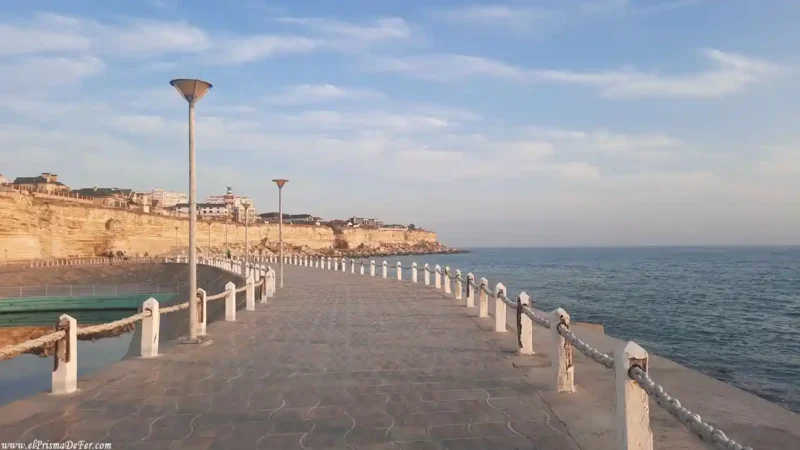Khiva is another historic gem of Uzbekistan. Its perfectly preserved walled city center looks like something out of a Arabian Nights story. And although it's now open to tourists, it still retains that dreamlike atmosphere, with quiet alleys and passageways, striking minarets, and interior courtyards where time seems to stand still.
Unlike Samarkand or even Bukhara, where modern life coexists more visibly with the ancient, in Khiva everything happens practically within the walls of Itchan Kala, its historic citadel. It's quite small and easy to explore in a day, but walking through it, whether in the sunlight or at night with its dimly lit streets, watching the light change on the domes and mosaics... is a precious moment.
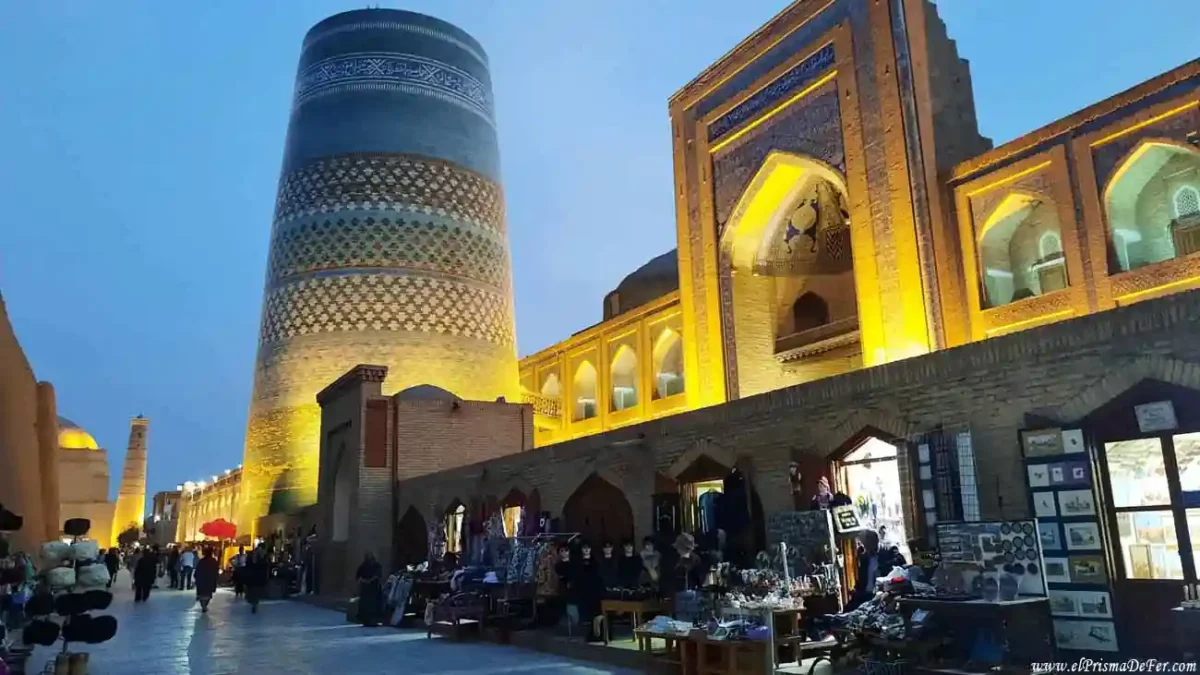

Table of Contents
A bit of history: Khiva and its centuries of splendor
For centuries, Khiva was one of Central Asia's key oases, an essential stopover for caravans crossing the desert between Iran, China, and the Caspian Sea. As early as the 10th century, it was mentioned as a prosperous commercial city, but it was from the 16th century onwards that it reached its maximum splendor when it became the capital of the Khanate of Khiva, one of the most important states in the region.
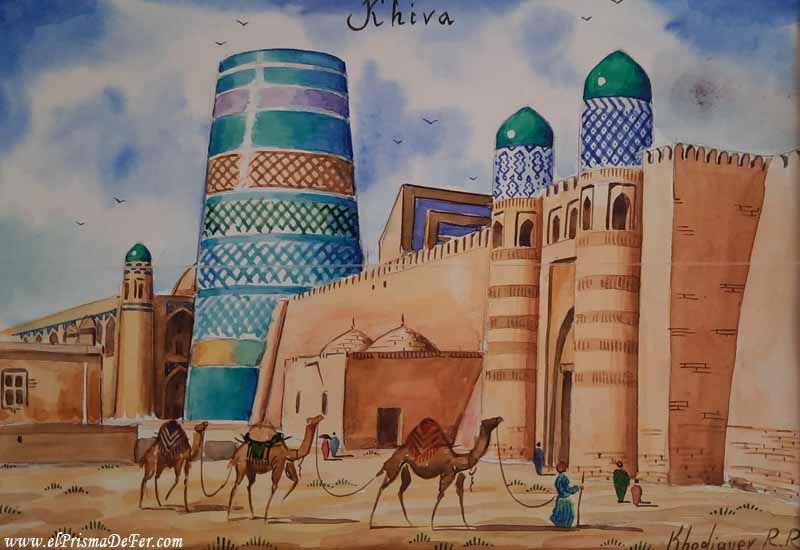
For more than three centuries, Khiva was a center of power, trade, and culture. Routes were controlled there, coins were minted, and madrasas, mosques, and palaces were built. Its walled citadel, Itchan Kala, is one of the best examples of an ancient Islamic city preserved, and was declared a UNESCO World Heritage Site in 1990. With more than 50 monuments and more than 250 traditional houses, wandering through its alleys is like walking through an open-air museum.
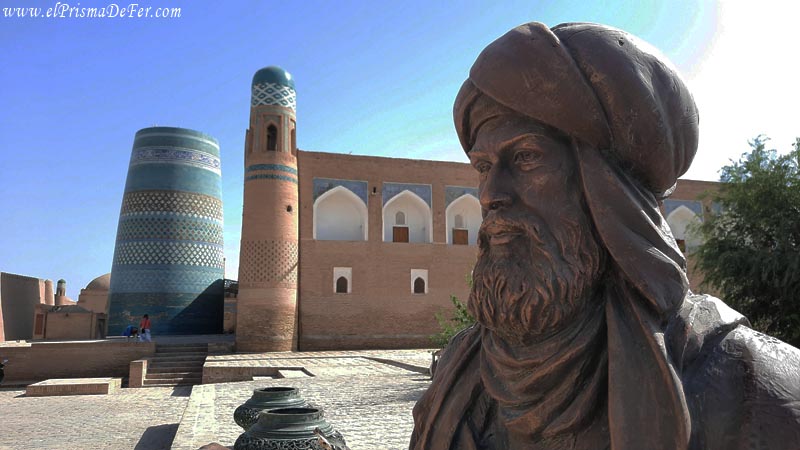
But Khiva's history also has its shadows. Until well into the 19th century, it was one of the largest centers of slavery in Central Asia. Thousands of people captured in the steppes or during military campaigns were sold in its famous slave market. It wasn't until the Russian conquest, at the end of the 19th century, that the khanate lost power and was integrated into the Russian Empire, marking the beginning of its decline as a political center, though not as a cultural gem.
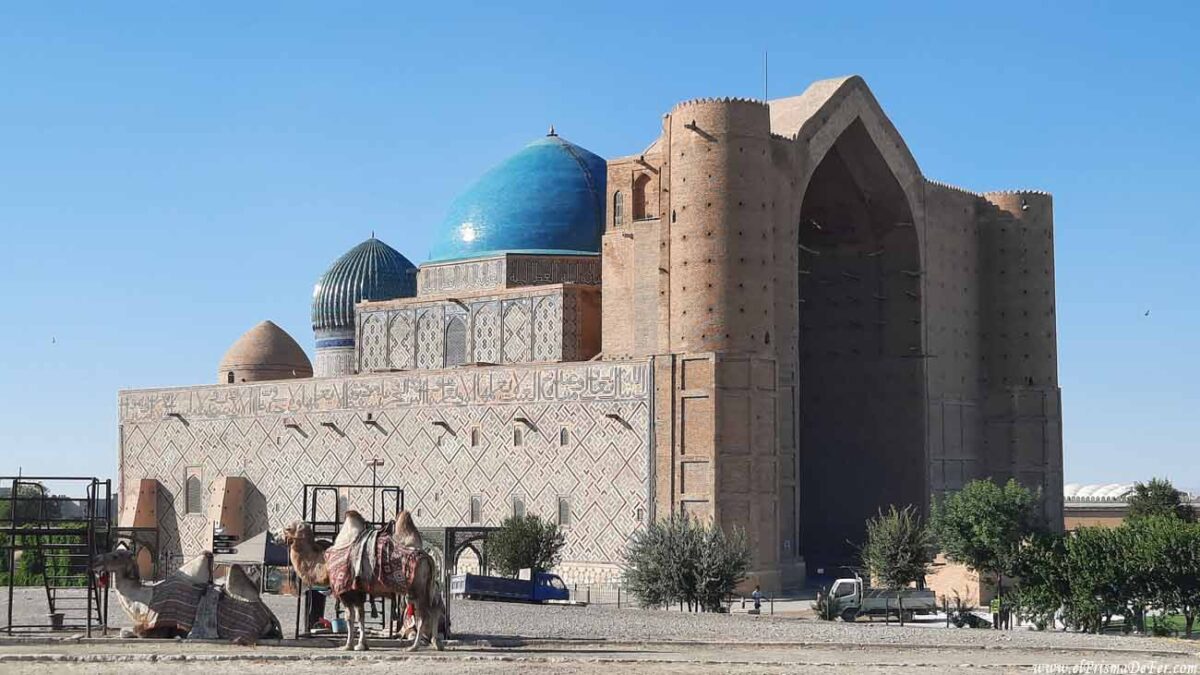
My time in Uzbekistan was part of a much longer trip along the ancient Silk Road, organized entirely by myself. If you are interested in learning more about this legendary route and want to know how to travel it today, you can start from this guide article, where I detail each country I visited during this epic journey
How to get to Khiva
Getting to Khiva may seem a bit complicated at first, as it's further away than other major cities in Uzbekistan, but with a little planning, it becomes part of the adventure. The city does not have its own airport, so the best option is to combine air or rail transport with a final stretch by road.
Important: If you are in Bukhara, there is a more comfortable and direct alternative: taking the modern train that connects Bukhara directly with Khiva station. Although it only runs a few days a week, it is the easiest and fastest option to get to Khiva.
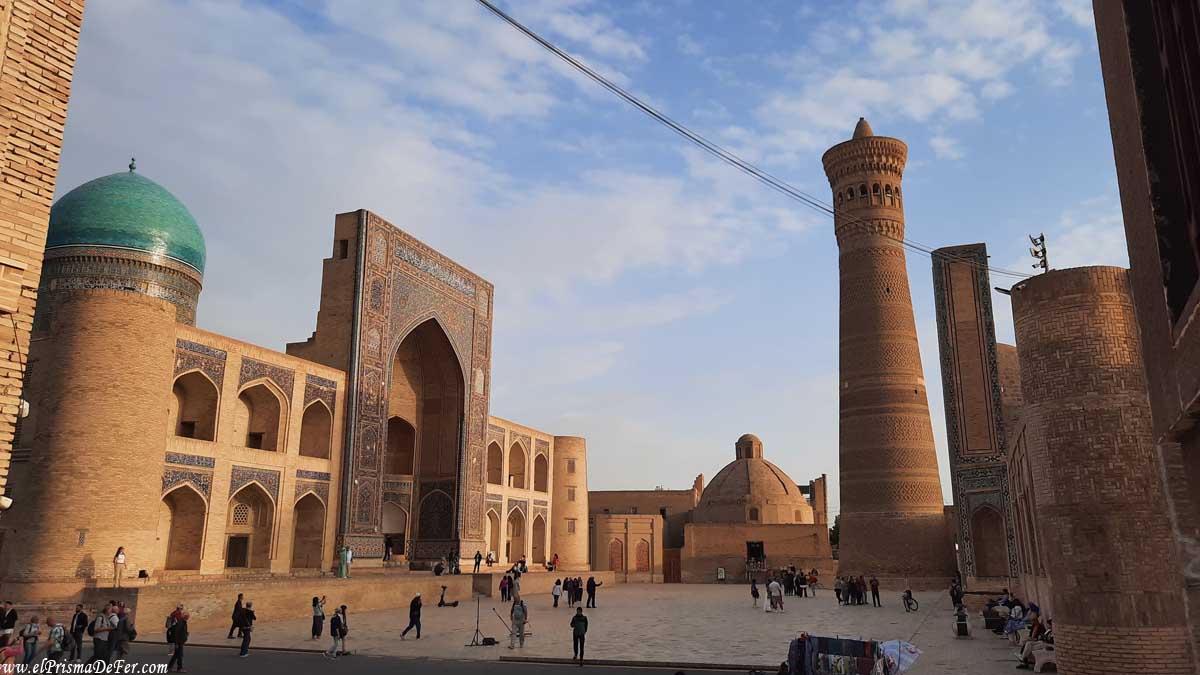
If you're traveling to Khiva, you'll surely include a visit to Bukhara in your itinerary . Don't miss the post I wrote about Uzbekistan's other gem.
Otherwise, the most common way is to first arrive in Urgench, the nearest city, located about 35 km from Khiva. You can get to Urgench:
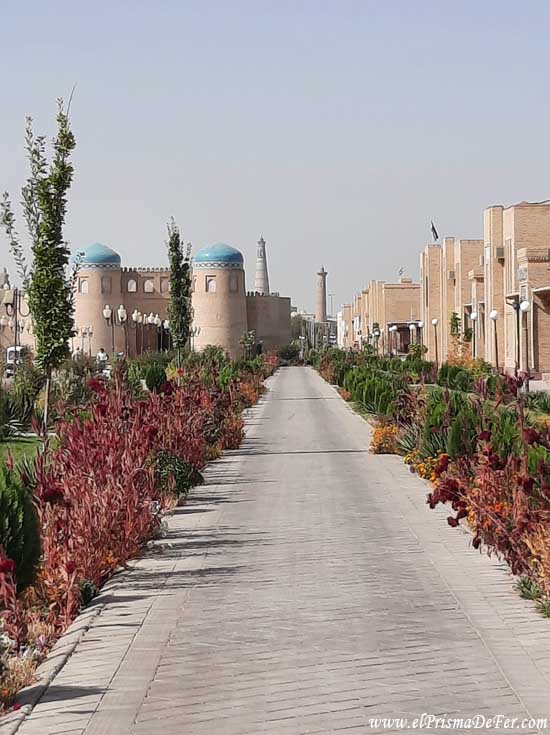
By plane: There are daily flights from Tashkent operated by Uzbekistan Airways. This is the fastest option if you are coming from the capital.
By train: There are also trains from Samarkand and Bukhara to Urgench, including overnight options and fast trains. From Tashkent, the journey can take between 14 and 18 hours.
From the Uzbekistan Railways or ETicket.uz sites you can see schedules, prices, and even buy tickets online.

Once in Urgench, you can take a shared or private taxi to Khiva (30-40 minutes), or even a marshrutka (local minivan) that will drop you off near one of the Itchan Kala gates.
For the more adventurous, it's also possible to get there by bus or car from Nukus (if you're coming from the Aral Sea side) or even from southern Kazakhstan, although these routes are slower and less traveled.
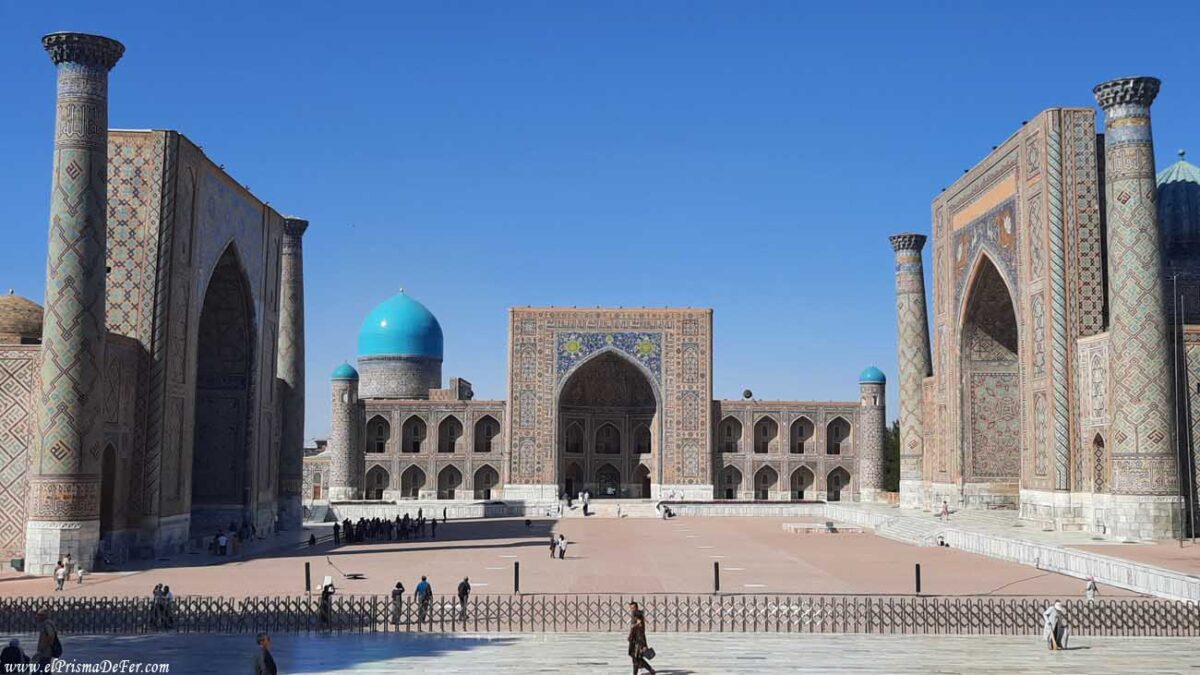
You may be interested in reading the Guide I wrote for visiting Uzbekistan on your own, with all the information you'll surely need to get around the country.
Map of the main attractions to see and visit in Khiva
What to do in Khiva: living history between walls and deserts
Khiva is like a set from another era. Everything revolves around Itchan Kala, the walled citadel that houses most of its historical monuments. Every corner has a story to tell, and exploring it is like stepping back several centuries. Here are the most important places you shouldn't miss, as well as a getaway outside the city that's well worth it:

Walking Tour
A walking tour in Khiva is the best way to start getting to know the city. While it's not free, it helps you get your bearings quickly, you'll learn history and anecdotes from a local guide, and you'll meet other travelers along the way. You can book your walking tour of Khiva here.
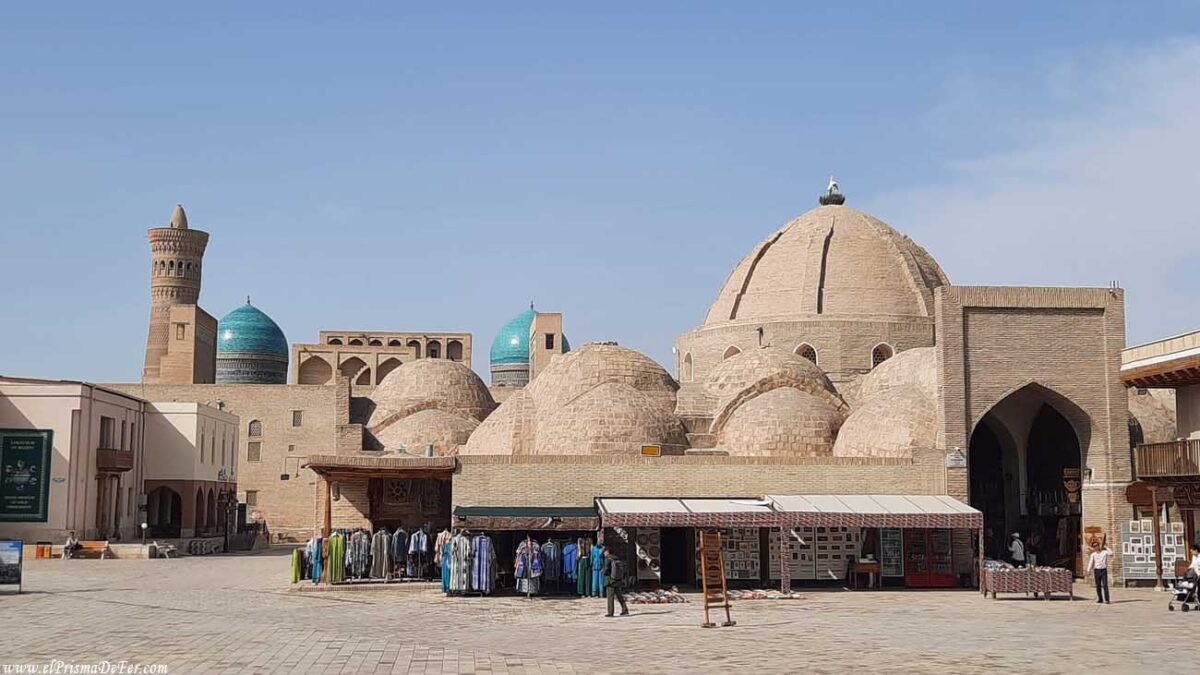
If you want to know the route I took in Uzbekistan, you can read my two-week travel itinerary through the country.
🕌 Kalta Minor Plaza and Minaret
Kalta Minor Square and MinaretThis wide, low minaret, with bright turquoise tiles, is one of Khiva's visual icons. Its name means "short minaret," as its construction was left unfinished in 1855 after the death of the khan who commissioned it. Still, it's impressive in its scale and decoration, and stands right at the entrance to Itchan Kala, marking the beginning of the tour.
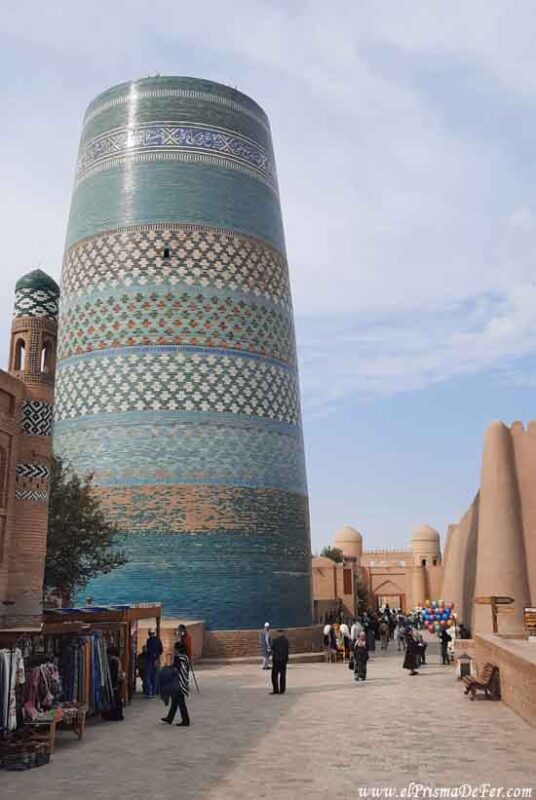
📚 Madrassa Mohammed Amin Khan
Facing the Kalta Minor stands this imposing madrasa, one of the largest in Uzbekistan. It dates back to the mid-19th century and served as an Islamic school. Today it's a hotel, but you can enter its courtyard and appreciate the architecture, which reflects the richness of the Khanate period.
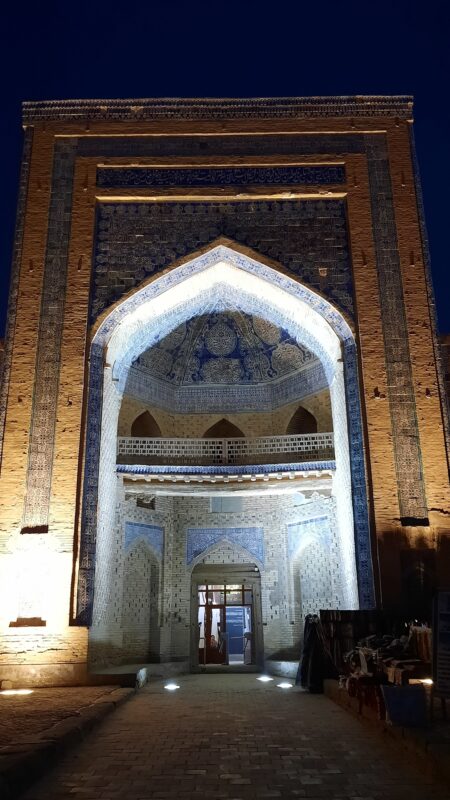
🏯 Kunya Ark Citadel
It was the residence of the khans of Khiva and one of the earliest buildings in the old city. Inside there is a small museum, the throne room, a mosque and a tower from where you get a panoramic view of Itchan Kala. Walking through its interior gives an insight into the political and religious power Khiva held at its peak.
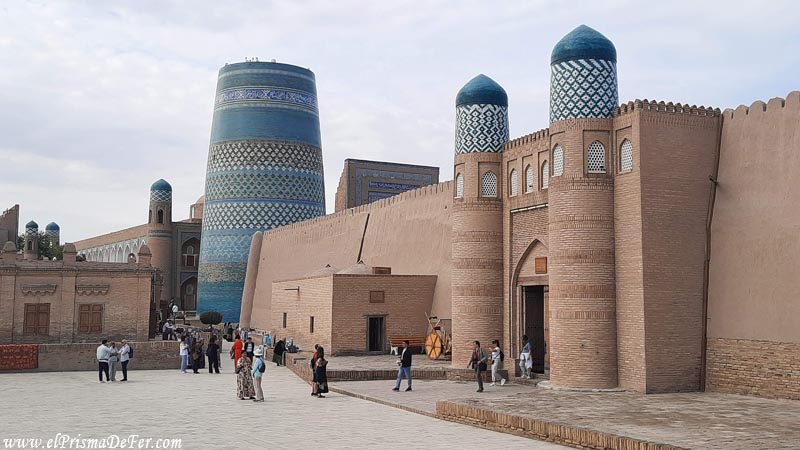
⛪ Islam Khodja Madrasa and Minaret
This complex is one of the most photographed. The tall, slender minaret can be climbed for the best views of all of Khiva. It was built in the early 20th century by Islam Khodja, a reformer who modernized aspects of the khanate without losing its traditional essence.
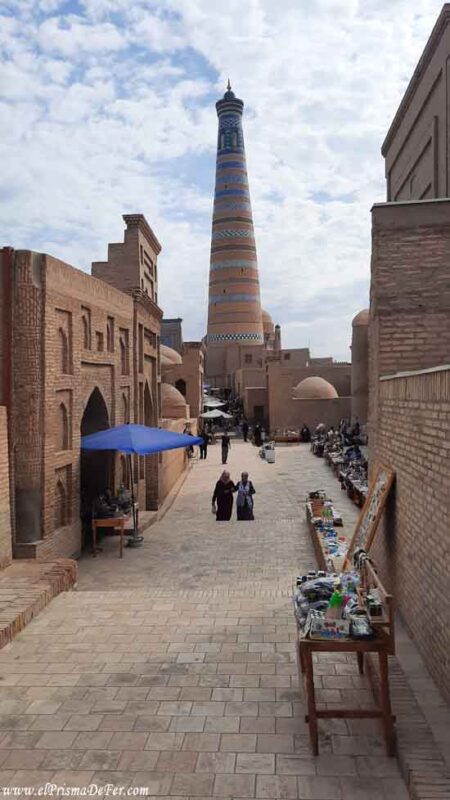
🕌 Mausoleum of Pahlavon Mahmud
Among Khiva's most impressive monuments is the Mausoleum of Pahlavon Mahmud, an architectural gem that combines mysticism, history, and beauty in one place. Dedicated to the poet, philosopher, wrestler and patron saint of the city, Pahlavon Mahmud lived in the 14th century and is revered to this day for his wisdom and strength.
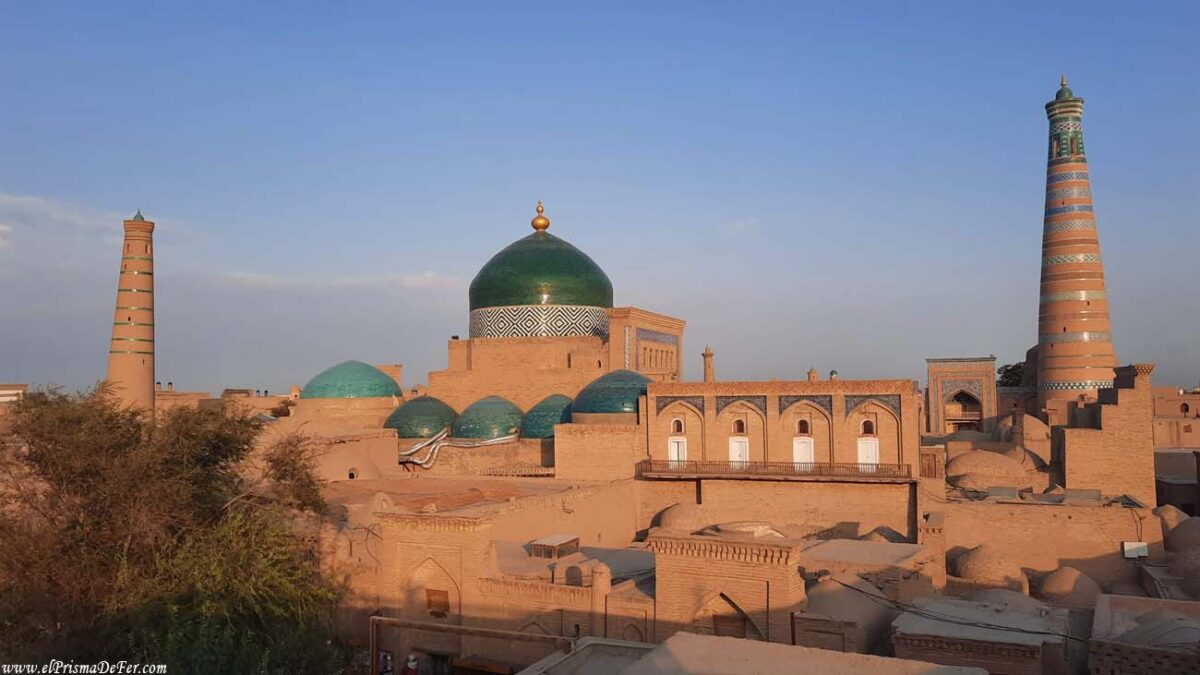
The mausoleum is easily recognized by its bright turquoise dome, one of the most beautiful in all of Uzbekistan. Inside, the walls are decorated with meticulously crafted blue and green tiles, creating an atmosphere of contemplation and wonder. The complex also houses the tombs of other members of Khiva's royal family, including Khan Muhammad Rahim Khan II.
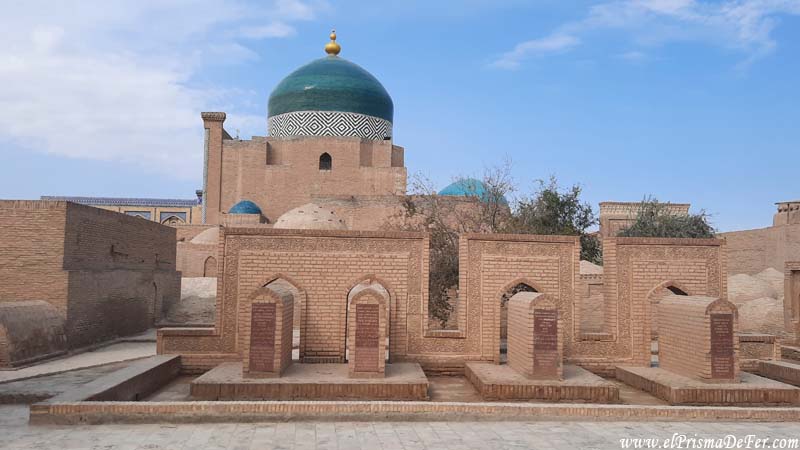
Beyond its artistic value, it is a place full of spirituality: you will see locals praying, leaving offerings or simply sitting in silence.
🧱 Tash Khauli Palace
This palace, whose name means "stone house," was built in the 19th century as a more private alternative to the citadel. It has more than 150 rooms arranged in interior courtyards, with areas for audiences, a harem, and administrative use. It is notable for its detailed tiles, carved columns, and decorated courtyards.
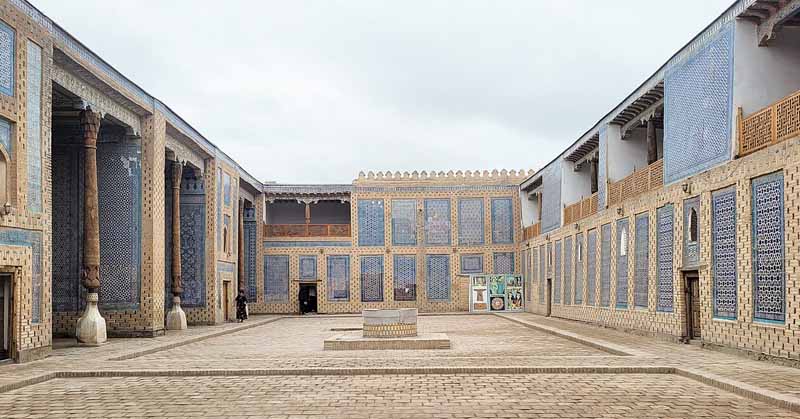
🕌 Juma Mosque
Unlike traditional mosques with large domes and elaborate facades, Juma is striking for its simple and mystical structure, built with brick walls and a flat roof supported by 213 carved wooden columns.
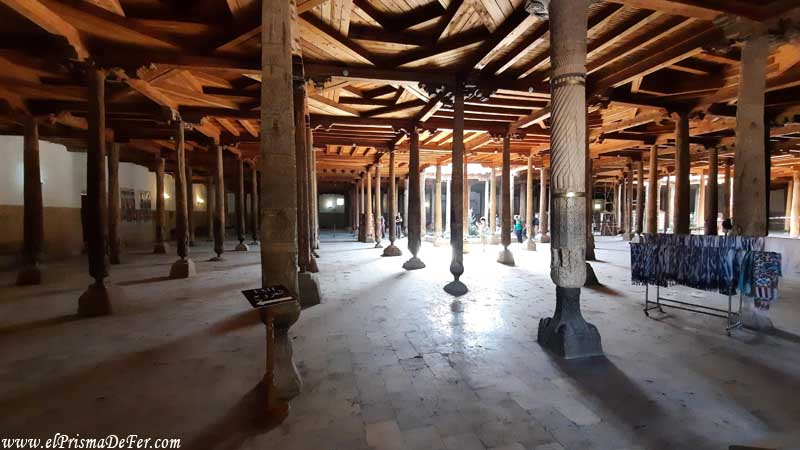
Each column is distinct, with geometric or floral motifs, and is believed to have been brought from ancient Zoroastrian temples or earlier mosques.
Built in its current form in the 18th century, albeit on a much older foundation, the Juma Mosque was conceived as a functional place, intended to protect from the scorching heat of the summer and the cold of the desert winter.
Getting lost in the alleys of Itchan Kala, especially at night
Walking through its quiet alleys at nightfall was my most enjoyable part of my visit to Khiva. When the tour groups leave and the streets empty, the old city transforms into a magical labyrinth of adobe and dim lanterns.
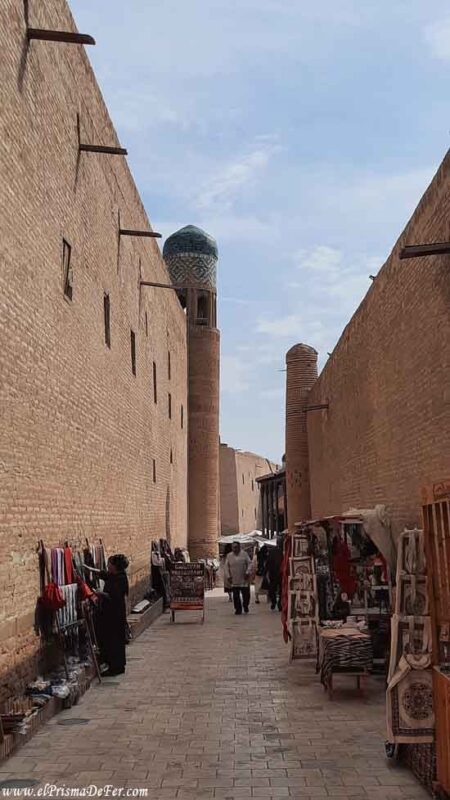
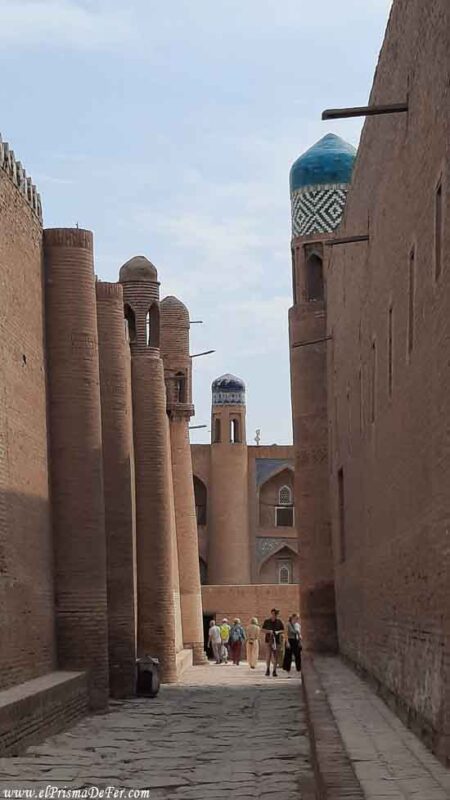
By day, Khiva is beautiful; But at night it becomes a little more mystical, ideal for absorbing its essence without distractions, photographing without crowds or simply letting yourself be carried away by the charm of its clay walls illuminated by the moon.
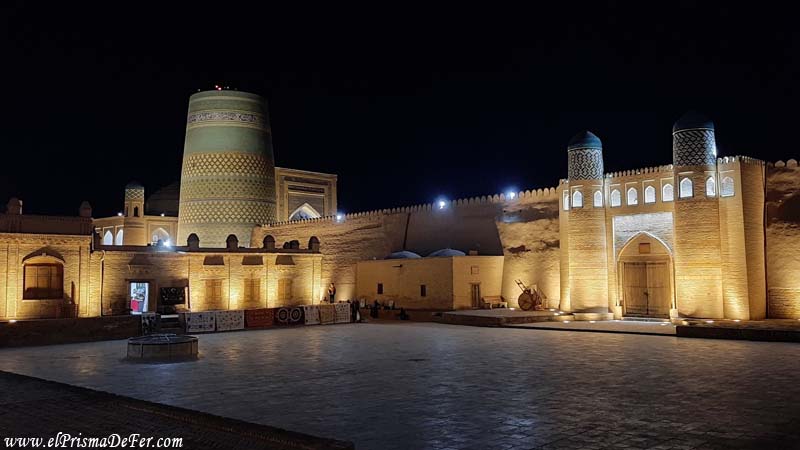
🏜 Desert Castles Tour (Elliq Qala)
About 100 km northeast of Khiva is one of the most interesting excursions in the region: a tour of the ancient Khorezm desert castles, known as Elliq Qala, which means “Fifty Fortresses” in Uzbek.
Although there are not fifty fully identified structures, there are more than a dozen ruined fortresses that can be visited, vestiges of a glorious past.
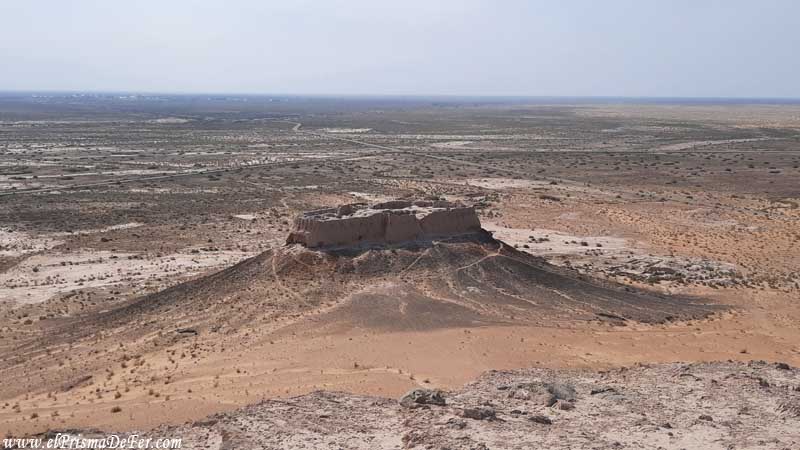
These fortresses date from between the 4th century BC and the 10th century AD, and were part of an ancient kingdom that flourished on the fringes of the Kyzylkum Desert, in an area irrigated by branches of the ancient Amu Darya River.
Their purpose was to serve as defensive bastions, administrative centers, and storage points for water and grain. The impressive thing is that many of these structures were built of adobe and clay, and still retain part of their original walls and floors.
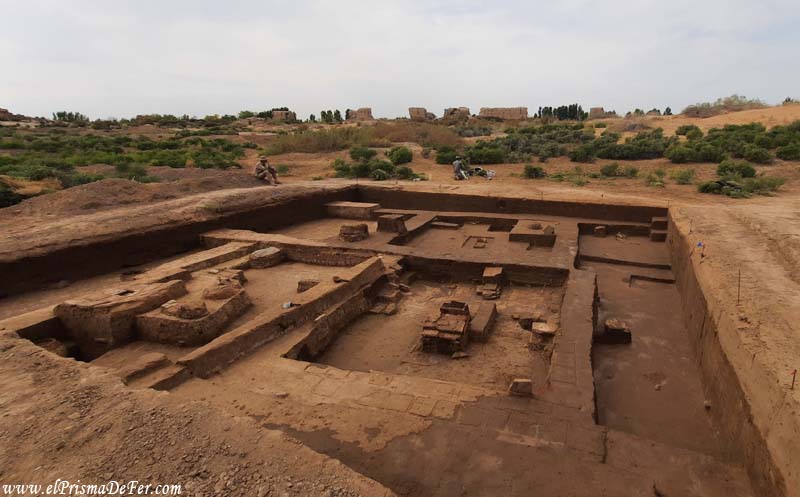
🏯 Most notable castles:
- Toprak Qala: Probably the most important, it was a regional capital in the 3rd century AD. The remains of ceremonial halls, columns, and walls can be clearly seen. It has a very well-defined rectangular structure.
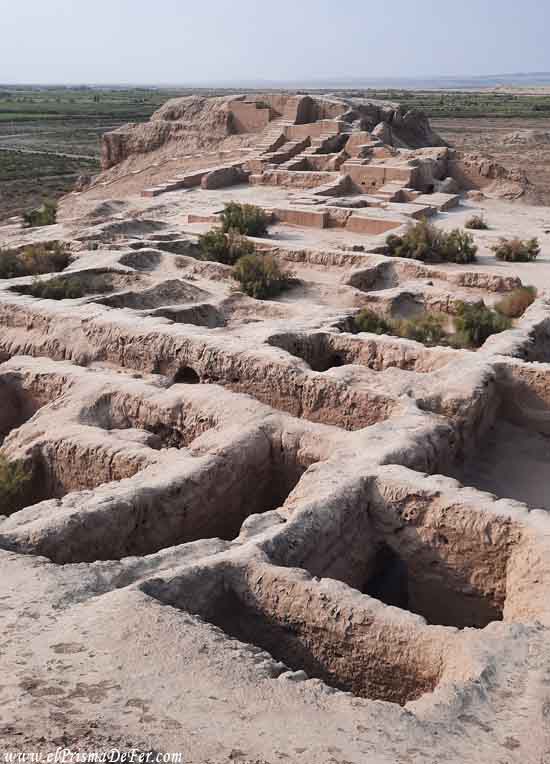
- Ayaz Qala: It is actually a complex of three fortresses located on a hill in the middle of the desert. Ayaz Qala I (the main one) dates back to the 2nd century BC, and from its summit you have a breathtaking view of the entire desert environment. Nearby is a traditional yurt camp, where many travelers spend the night to experience the nomadic experience.
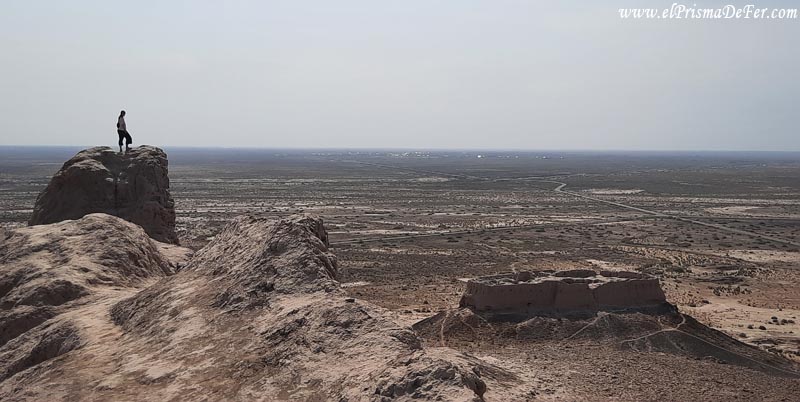
- Qizil Qala and Qoy Qala: Less visited but also interesting, they are usually included in more complete tours.
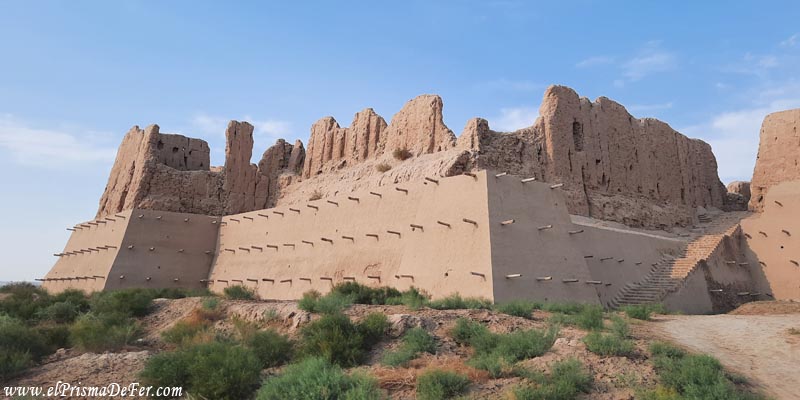
🚐 How to take the tour:
The price varies depending on whether you go alone or share a vehicle with other travelers, but it is around 30 to 60 USD per person, including transportation and a guide.
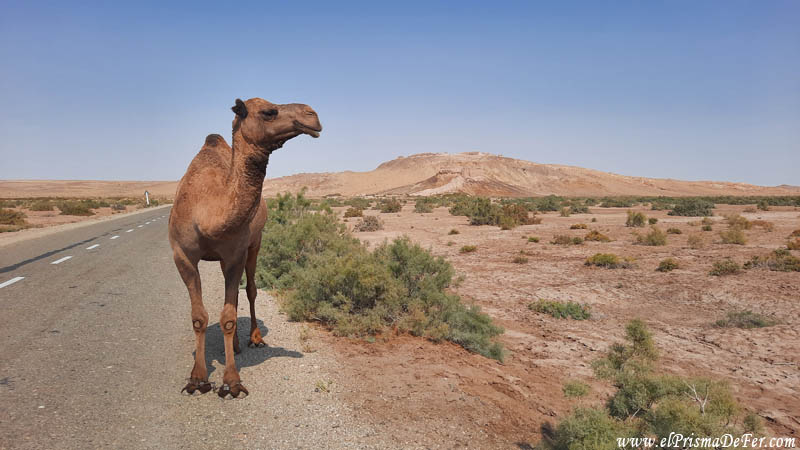
The most common option is to book a tour from Khiva or Urgench, which includes transportation by car or van with a driver, and can last between half a day and a full day.
Some tours offer the option of sleeping in a yurt near Ayaz Qala, with a traditional dinner and starry sky included.
It's also possible to organize it on your own, but it's recommended to have an offline GPS or a downloaded map, as many of these fortresses are in the middle of the desert and there's no public transportation.
Aral Sea Tour from Khiva or Nukus
Another excursion that can be done from both Khiva and Nukus is to visit the Aral Sea on the Uzbek side.
The Aral Sea was one of the largest lakes in the world until recently, but due to human intervention, it gradually disappeared over the years until it became the current desert.
Most tours include stops in Moynaq, the most symbolic village of the ecological disaster, where you can still see the famous rusty ships stranded on the sand.
They are long journeys, lasting many hours on arid roads, but they can be a unique getaway, both for what they represent and for the desolate beauty of the landscape.
I visited the Aral Sea from the Kazakhstan side, and while it's the same geographical area, there are some differences in what to expect.
Organized activities in Khiva
⏳ How many days should you stay in Khiva?
Khiva is a compact city, and unlike Samarkand or Bukhara, all its main attractions are concentrated within the walls of Itchan Kala, allowing you to explore it quite thoroughly in a short time.
One or two full days are enough to see its most important monuments: the Kalta Minor minaret, the Mohammed Amin Khan Madrasa, the Kunya Ark citadel, and the adobe alleyways that retain a century-old feel. If you like to travel slowly, take photos in good light, or simply stroll around at a leisurely pace, staying two nights is ideal.
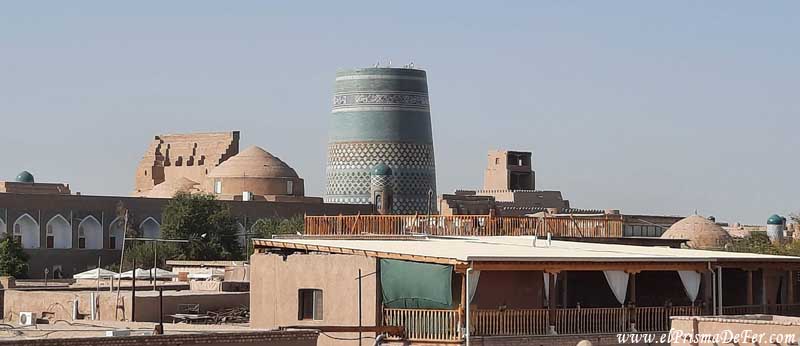
Plus, if you have extra time and want to explore the surrounding area, you can add an extra day to take the Khorezm Desert Castles Tour, such as Ayaz Kala or Toprak Kala. This excursion can be done in half a day, but if you want to sleep in a yurt or enjoy the sunset in the desert, it's best to stay a third night.
In summary:
1 full day: The essentials of Khiva (Itchan Kala).
2 days: to enjoy more calmly, sunrises and night walks.
3 days or more: if you add an excursion to the desert castles or accommodation in a yurt.
How to get from Khiva to Aktau in Kazakhstan
I wrote a particular post detailing how to travel from Khiva to the city of Aktau, crossing the border into Kazakhstan.
🛏️ Where to stay in Khiva
One of the great advantages of visiting Khiva is that many accommodation options are within the walled city, known as Itchan Kala, allowing you to enjoy the historical atmosphere even after leaving your accommodation. Walking through the cobbled streets at night, without the hustle and bustle of tourists, is part of the magic of staying within its walls.
🏰 Sleep inside Itchan Kala
For those looking for a more immersive experience, staying within the Old City is ideal. There are a good number of family guesthouses and boutique hotels housed in renovated traditional houses. Some options:
- Muso To’ra Hotel: Located steps from the Kalta Minor minaret, with comfortable rooms and a terrace overlooking the historic center.
- Shaherezada Boutique Hotel: traditional style, thoughtful decor, and a hearty breakfast. Ideal for beautiful photos and a local atmosphere.
- Family Guesthouses: Many local families offer simple but clean rooms, with breakfast included and warm service.
🛏️ Options outside the wall
If you prefer something a little more affordable, or if the accommodations inside are full, there are several guesthouses and small hotels just outside Itchan Kala, less than a 5-10 minute walk away. These options tend to offer better value, more rooms available, and more direct access to transportation or modern restaurants.
- Khiva Siyovush Hotel: good value, just 300 meters from one of the main gates.
- Islambek Hotel: very popular with backpackers, affordable and well located.
💡 Useful tips
- Booking in advance is key, especially during peak season (spring and fall), as Khiva is smaller and accommodations fill up quickly.
- If you want to sleep in a yurt, some agencies offer this experience in the outskirts, combined with a tour to the desert castles.
- Make sure your accommodation has air conditioning or good ventilation if you're going in the summer: the heat can be stifling!
- Many accommodations offer transfers from the train station or Urgench, ask when booking.
🧭 My reflection on Khiva
Khiva is, without a doubt, a beautiful city. Its old town looks like a film set frozen in time, with impeccable walls, majestic minarets and adobe streets that preserve the atmosphere of the Silk Road. Everything is so well preserved (probably thanks to intensive restoration work) that you can't help but feel like you're on a living postcard.
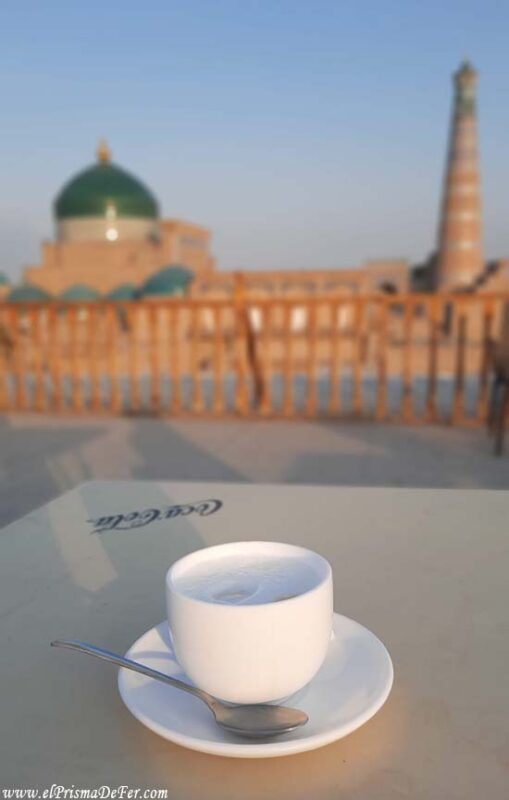
But as the hours passed, I began to notice that the city is very compact. In a short time I had already walked its streets several times without intending to, and I felt that the surprise factor was fading quickly. Although it has charming corners, I felt like it was lacking a bit of everyday life, that local sparkle that one finds in larger cities or those less prepared for tourism.
Don't get me wrong: Khiva is worth a visit. But if time is tight and you have to choose among Uzbekistan's gems, it would be the city I'd rule out. Its distance from Samarkand or Bukhara, and its quick travel time, make it perhaps not so essential if you're prioritizing.
Support The Prism of Fer!
Your support helps me continue creating free content on the blog. Thank you so much!


